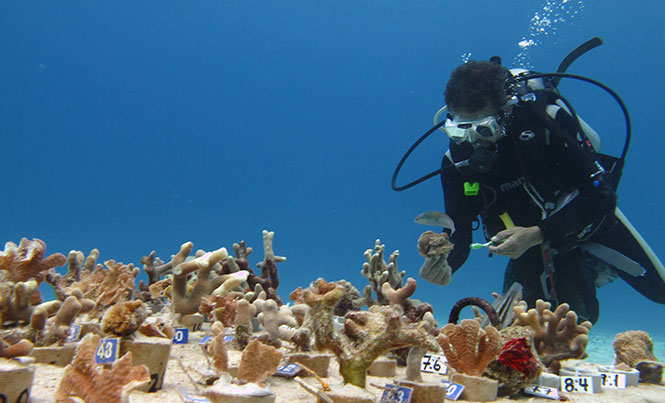
Reef transplantation projects are essential to the restoration and protection of this vital ecosystem
Coral transplantation is one option available to managers considering restoring a degraded reef. To do this, there are a few steps to follow such as identify the sources, establish a nursery, find a method for re-plantation, monitoring, and maintenance. The establishment of coral nurseries that can supply corals of a size that can survive and grow at the site to be restored is a prerequisite for reef restoration. In the nursery, young corals may be placed in baskets suspended off the seafloor, attached to blocks on the seafloor, or hung on lines that look like clothes lines. The rescued corals are usually cared for by biologists and volunteers who monitor their health and growth and keep algae and other invasive organisms under control.
Monitoring transplanted corals over time is an essential component of any effort, providing an assessment of the viability and success of the project. Regular visual checks on the status of the transplants can help to identify problems that may require adaptive management (e.g., maintenance action to remove predators), whereas semi-annual or annual systematic surveys may be necessary to show progress toward longer-term objectives (such as increasing coral cover or reef fish biomass).
In the Mexican Caribbean, the Mexican national university, stakeholders, and international partners are collaborating in a nation-wide effort to restore and conserve corals. However, if the rates of coral damage, land/mangrove deforestation, pollution, and overfishing stay as they currently are, there is a high risk that transplanted corals will not survive. Thus, it is crucial for coral transplantation that any significant local anthropogenic impacts on the reef are under some form of effective management.
More information at www.coralrestoration.org/ and http://www.secore.org/site/our-work/detail/project-mexico.36.html